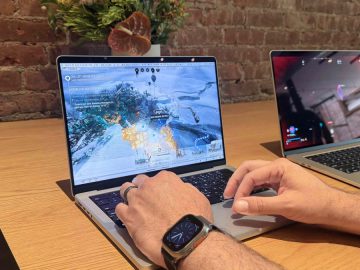A recent column titled “America’s political polarization is driving it under for fake news” made me think of those social occasions at which we sample food in bite sizes.
You don’t really get to savor and appreciate the ingredients or the knowledge that went into creating the morsel. But it does give us just enough to have an opinion or even tell someone else to try it.
When I was young, going for a Sunday drive was an entertainment and a highlight was reading a series of Burma-Shave signs. Burma-Shave was an American brand of brushless shaving cream famous for its advertising gimmick of posting humorous rhyming poems on small sequential highway roadside signs. The first sign would read: “A Shave.” Then there would be several feet till the next sign that would read: “That’s real.” The subsequent signs would read: “No cuts to heal”/ “A Soothing”/ ”Velvet after-feel”/”Burma Shave.”
If you are my age, you might remember radio shows often had a product as part of the name of the show, like the Champion Spark Plug Hour. Or from TV, you might remember Dinah Shore singing “See the USA in your Chevrolet.”
I started in the public relations and advertising business in the 1970s, just a tiny bit later than the time period of the television series “Mad Men.” I thought the show was a pretty accurate depiction of the times. The point was to boil down the reasons to buy a certain product into bite-sized, memorable nuggets.
Years later, that became known as branding. Today, some even talk about personal branding. I recently watched the “Money Game” Netflix series about several college athletes taking advantage of the new Name Image and Likeness (NIL) opportunities for college athletes talking about how they are making money off of “their brand.”
I have been involved in college athletics for many years, up until recently. I never heard of an athlete talking about her or his brand.
I am not surprised that this “branding” has become prominent in politics or any other aspect of life. I even know of churches that think of themselves as a brand.
You see, the easiest way to think about something is in bite-size pieces. When I was young, the suburban people were perceived to be a little better. Why? Just because of where they lived. My Michigan Tech University was considered by some to be a tad below the University of Michigan or Michigan State. When my Dad bought a Chrysler instead of a Plymouth, I thought, “Wow.”
So today, we wear our political badges like we do a logo on a tee shirt—not thinking much about what’s really behind it. “Just Do It” means what? Do what? Is the doing good for anything or anyone else?
Let’s come back to politics.
The aforementioned column had this: “The bottom line, though, is that lots of us aren’t as well-informed as we could be. … In the wider world of current events, people aren’t getting the kind of multi-perspective news that newspapers provide. Just seeing out-of context headlines in a feed isn’t enough to make a news consumer informed.”
By now the election is over. What have we learned? What do we expect to change — or to continue? Are we evaluating the future in more than sound bites? Are we talking to our friends in more than sound bites? Are we ready to put aside the nonsensical sound bites and chew into serious nutritional conversations about the future and solve problems?
Bon appétit.
Ross Feltz of Meadville is a public relations consultant and co-owner of Decorating Den Interiors.




